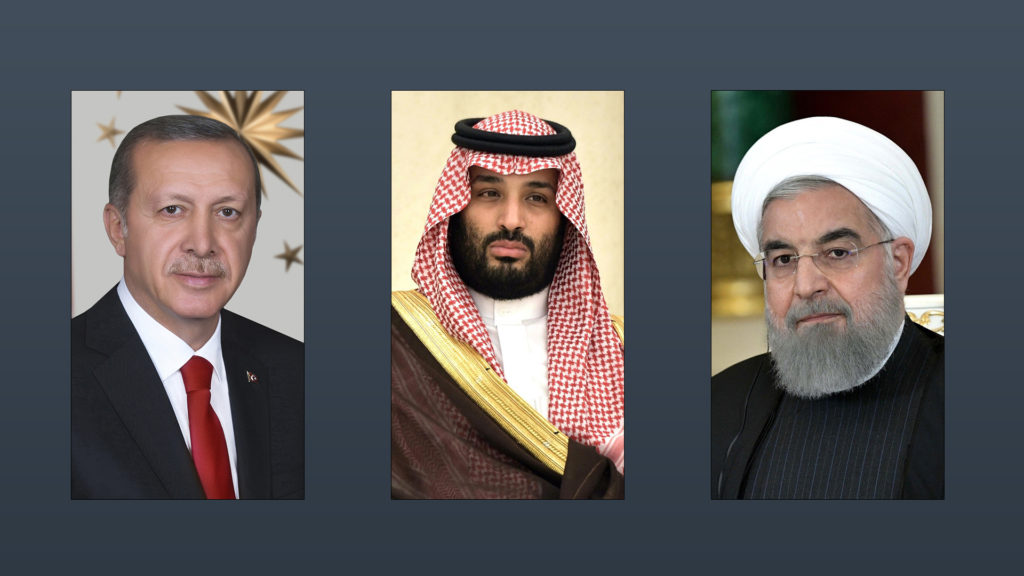The Leverages of US and Pakistan
With the announcement of Trump’s South Asia policy, the US-Pakistan ties have once again entered a period of tumult. His speech had all the ingredients that would put Pakistan in a state of paranoia, and perhaps that was one of the immediate intensions of the new policy.
His speech was followed up by a strong reaction from Pakistan, where the civil-military relations are at an all time low. And then came the congressional hearings where General Jim Mattis informed the Armed Services Committee US will try to work with Pakistan ‘one more time’. Earlier, the chairman of the Joint Chiefs of Staff General Joseph Dunford iterated that Pakistan’s military intelligence has links with the terrorist groups. This statement was not much different than what Mike Mullen had stated in 2012 on the same matter. Pakistan’s former Army Chief General Ashfaq Parvez Kayani was known to have close comradery with Mike Mullen, and that still it did not prevent from what transpired.
The political leverages for the US include cutting off support for Pakistan’s non-military financial assistance, downgrading its major non-NATO ally status, imposing sanctions, and declaring it a state sponsor of terror. On the military side, the options include reactivating the drone strikes, and hot pursuits, which is also known as the troops on the ground option. A combination of these tactics have been employed in the past, some even before 9/11 in connection with Pakistan’s nuclear program. If they were successful, is less clear.
Ever since the nation acquired nuclear weapons, it has become even more crucial for it to be seen as a rational player. It simply can’t afford to be perceived as the first Muslim nation with nuclear weapons acting unreasonably. In this regard, any attempts to isolate or sanction it, sets the alarm bells ringing in Islamabad.
On the other hand, Pakistan has traditionally maneuvered skillfully to play with the American sensitivities, create a need for itself, and meanwhile rejuvenate the ties. Whether it is countering a global power through Jihad, or the campaign against extremism, they have provided opportunities for the geo-strategically situated Pakistan, and its political and military leaders, to reset ties with the US.
Why Pakistan Failed to Build Its Case?
While some in Pakistan, and few in the US were shocked by the newly unveiled US South Asia policy, the groundwork for this approach was laid down over a period of time. Whether it be the congressional hearings or think tank discussions, the discourse was quite clear. The primary focus has remained on building pressure on its military to cease its alleged support of Afghan Taliban (Haqqani Network) in Afghanistan and other groups oriented towards India.
An impression one gets in Washington for some time now is that the country had given up countering the narrative that has been building for some time, including on the social media front. One may ask why that has been the case. Was it that the situation was misrepresented to the government back home, or could it be incompetence? To the stoics amongst the crowd, perhaps it was deemed to be inevitable. Perhaps the divisiveness between the political and military establishment is more to be blamed for this. Speaking at the USIP in early October, the newly appointed Foreign Minister Khawaja Asif came to Washington all guns blazing. The performance, however, should have occurred many years ago.
Pakistan’s response to the developing situation can be divided along the liberal, conservative and nationalist schools of thoughts. Those representing the liberal school in Pakistan, or abroad, have supported the argument the Pakistan’s powerful military needs to be reined in. They have felt threatened by the trajectory that the nation got set on in the 80s during the Afghan Jihad, which has already made things combustible for them and the minorities. The war against extremism has further minimized the breathing space for liberals. The West interprets this fear as the Islamization of Pakistan’s military with nuclear weapons in its possession. This apprehension has been exploited by Pakistan’s adversaries, and coincidentally by Pakistan’s own political parties for their own purposes. Memogate was perhaps the first outward expression of this. In the present times, the Dawn Leaks has generated similar controversy.
While the interests of the liberals are resonating with the Western governments, the nationalist sentiments and religious conservatism are gaining on the ground. And this dilemma is not unique just to Pakistan, other parts of the world, including the West, face similar trends.

Turkey, Iran, and Saudi Arabia
Turkey
As the shift in the global balance of power speeds up, and the manifestations of the America First doctrine start appearing, Pakistan would have to measure how its response compares to that of other Islamic nations.
The war against terror is now fully intertwined with global power tussles and is unlikely to subside any time soon. It has already produced a dramatic shift in the case of Turkey, where after the failed coup attempt, thousands of people have been arrested for conspiring against Erdogan’s government. The purge is focused against a whole segment of the society, as opposed to few hundred individuals involved directly in the debacle.
On the external front, its interests are being stepped on when it comes to the matter of Kurds, and it has no choice but to drift towards Russia and Iran for political and military support. On the other hand its ties with the US and the West are in a nosedive. Nonetheless, it’s a tremendous shift from where the country stood at about few years ago, when it was presented as an Islamic economic powerhouse and a NATO member. The matters have never looked the same after Gaza Flotilla incident in 2010.
Iran
Iran stands on the other end of the spectrum. The country has been classified as an international pariah for sometime now. It has been blamed for supporting Hezbollah and Hamas, and for continuing to threaten Israel. However, it is also on the frontlines in Syria fighting ISIS along with Russia, US, and Turkey, while supporting the preservation of the Assad regime.
It was only after the P5+1 deal reached in 2015 that it began to see light at the end of the tunnel. While there is a threat of religious conservatives taking the helm of power in other parts of the Muslim world, in Iran that already happened in 1979. With the nuclear deal there was optimism that lifting of sanctions would lead to the emergence of moderate Iran. However, the chances for that are diminishing now, as the Trump administration appears moving towards nullifying the deal. In all likelihood, if the treaty is dissolved, the hardliners in Iran will be vindicated.
Saudi Arabia
Then there is the case of Saudi Arabia, which is the most conservative and non-democratic of the Islamic states. Nonetheless, it has been able to garner the support of the US and has developed convergence of interests with Israel. As the campaign against extremism has evolved, its threat perception has aligned with that of Israel and the US, especially when it comes to countering the growing Iranian influence in the region. In this regard, an attempt is afoot to start differentiating between Persian and Arab Shiites.
To protect itself, the Kingdom has gotten directly involved in Yemen, and now with the help of GCC nations, and Egypt, is also attempting to isolate Qatar. Moreover, with facilitation and pressure from Egypt, Hamas and Fatah reconciliation is also in the works. Obviously, this will entail renunciation of violence on the part of the Hamas. Will this lead to some type of rapprochement between Israel and Palestine, is too early to tell. It should be mentioned though that Hamas had lately received more support from Iran, Turkey, and Qatar, especially in the aftermath of Gaza blockade that started in 2007.

Drawing the Lessons
Keeping these examples in perspective draws one to the following lessons:
The three nations of Iran, Turkey and Saudi Arabia have had to project power beyond their borders in order to protect their interests. All three are involved directly or via proxies In Syria. In the case of Yemen, it is Iran and Saudi Arabia. However, this involvement comes at tremendous risks and costs.
Due to the environment created by the campaign against extremists, nationalist and conservative segments of the societies are resurgent in the West as well, while creating polarization. And this dynamics could create a dangerous confrontation between the East and the West. Extreme nationalism can lead to jingoism and risky mistakes. The key question becomes how to mitigate these risks.
To contemplate the future course for the US-Pakistan ties, one has to look at the short-term hick-ups that seem to pop-up frequently and spoil the ties, and the long-term strategic context. While it is customary to point to issues related to Afghanistan, and Indian role there as the cause of mistrust between US and Pakistan, it is actually the differing strategic visions.
Approaching the future in a zero-sum manner results in the recurring tensions between US and Pakistan. There is a need to craft win-win scenarios amongst the various stakeholders and for dealing with extremists of different colors.




